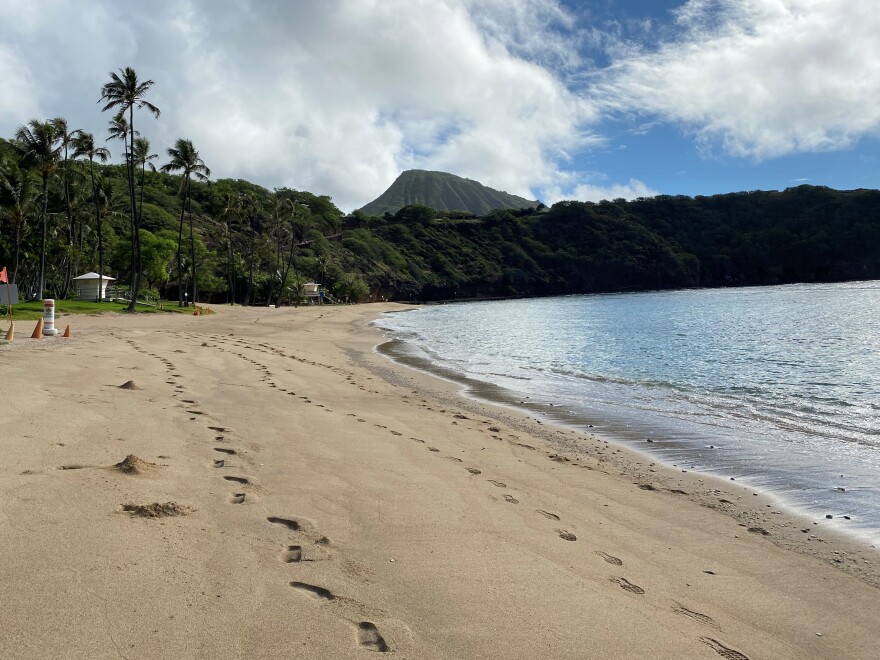A new study from the Hawaiʻi Institute of Marine Biology at the University of Hawaiʻi at Mānoa is predicting most of Hanauma Bay's beach will be underwater for a few days in 2030.
Researchers used models to show the impact of sea-level rise at the bay. They combined the lowest predicted rise of six inches with the island's seasonal King Tides, when waves splash higher on the shore higher than normal.
It forecasts that 88% of the bay's usable beach, or sandy portions, would be submerged in 2030.

"This is only during peak high tide to king tides that we experienced," said Andrew Graham, a graduate assistant to the study.
"So it's not going to be something that people have to worry about all the time. It's just going to be a couple days a year, where the surf will come up to near the grass — which may increase crowding at the beach," Graham said.
Kuʻulei Rodgers, the study's lead researcher, said that six inches of sea-level rise can have a significant impact on the environment.
"This can equate to tens, even hundreds, of feet inland because you're looking at the slope. So one meter of sea level rise vertically can equate to a lot more on the coastline," Rodgers said.
The finding is part of a broader study that looks at the nature preserve's ability to withstand damage from recreational, biological and physical uses — a concept known as carrying capacity. Researchers hope the study will help improve management and conservation efforts within the preserve.
The team has been conducting carrying capacity surveys at Hanauma Bay for the past five years.
"Changes to marine resources comes changes in management. [It] must be adaptive to incorporate a balance to assure continued visitor enjoyment and marine conservation," Graham said.
The study looked at visitor demographics, the movement and habits of fish species in the preserve, and water clarity. Researchers collected data during the preserve's closure in 2020 and 2021, and when it reopened.
The study also found that water clarity was clearer by 56% during the pandemic closure. That decreased upon reopening to 30%, when the nature preserve only had 25% visitor capacity.
The City and County of Honolulu recently enacted a reservation system for the preserve to manage the number of visitors. The system raised visitor fees, while giving residents free admission and special timeframes to visit. The preserve is also now closed two days out of the week.
"The reduction of visitors has directly benefited the recreational enjoyment, and the improved reef condition," Rodgers said.
To read the Hawaiʻi Institute of Marine Biology's full study, click here.





